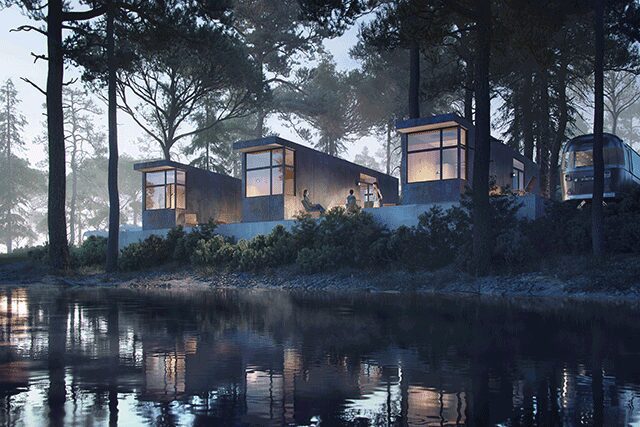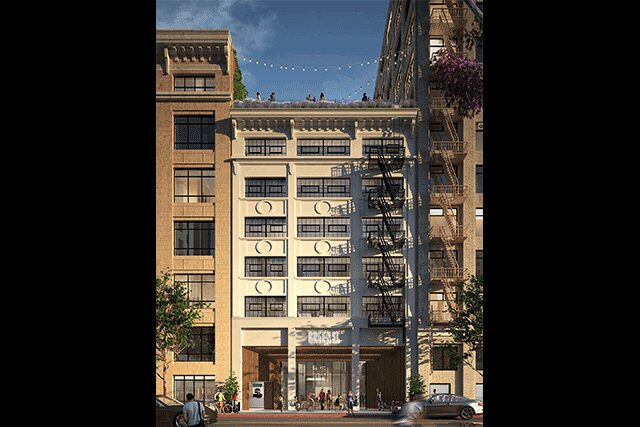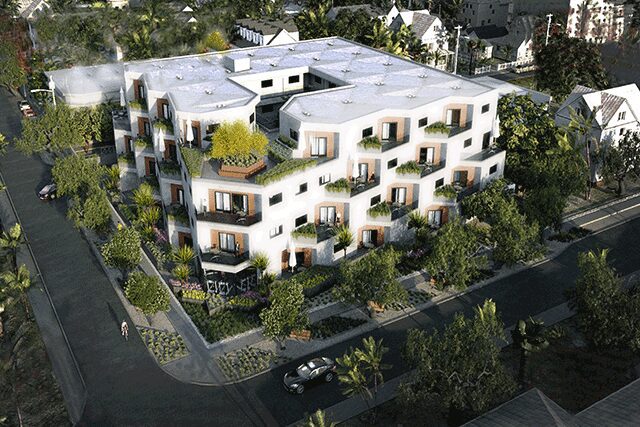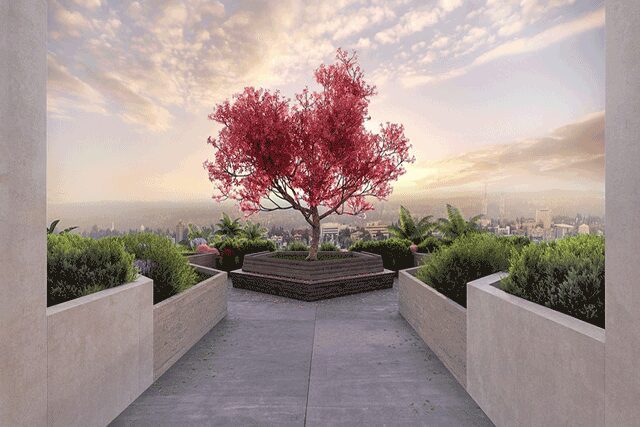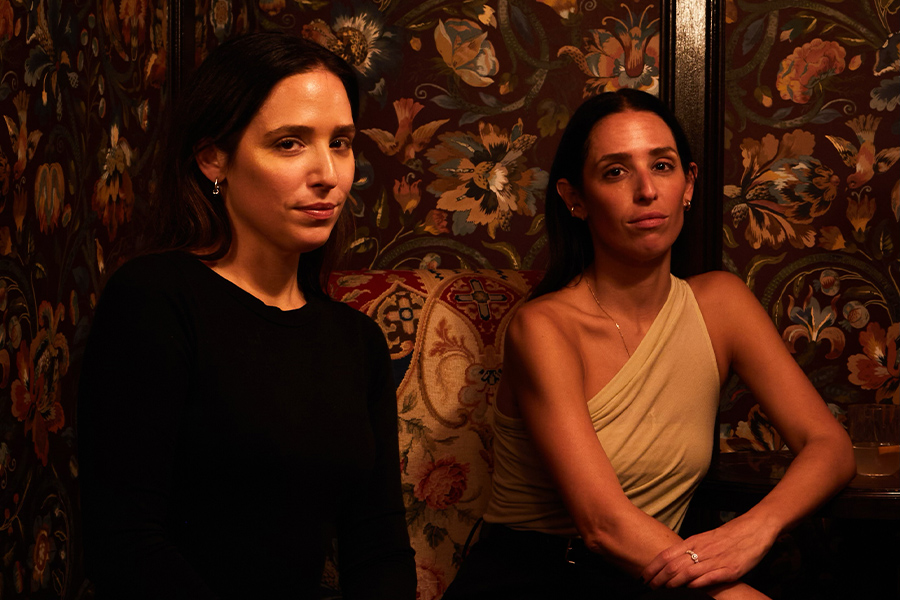The Canadian-bred, Los Angeles-based Matthew Rosenberg struck out on his own in 2012 with M-Rad simply because “I didn’t want to work for anyone else,” he says. He’s also rethought the norm, taking equity in his projects—10 in total—as part of an all-encompassing approach to design, handling everything from what he calls pre-architecture (development), architecture (exteriors and interiors), and post-architecture (marketing and branding). Beyond the viral pink house project in LA and AutoCamp units in Yosemite National Park, he’s behind cannabis community Greene Street Agency in Downtown LA. It’s a reflection of his mission to curate design-driven properties that also speak to the changing world.
What drew you to working with luxury camping company AutoCamp on five suites in its Yosemite location, set to open this spring?
Hiking and being in nature are big parts of my life, so to have the opportunity to design something that sits in Yosemite was amazing for me. It’s interesting for us to tie hospitality in this high-touch experience, where the common space is the nature all around you. The project started with needing to design five ADA-accessible units, which transitioned into luxury units. We brought in these beautiful walnut woods and tied it back to nature and the site it sits on. As you’re sitting inside, we want it to still feel like you’re connected to the surroundings, which are just stunning.
What were the challenges when deploying these prefab structures?
I’ve always been interested in figuring out new [methods] of construction, and this was a good opportunity to explore new ways to build offsite and then mobilize it to the site very quickly. But things change and move when you take something that’s perfect in a factory and then drive it across the country. You have to go back to the site and fix it, so we learned a lot about what to do in the factory and what you can do on site.
You’re also leading the design of cannabis members’ club Green Street Agency in Downtown LA, which has been dubbed a real estate disruptor.
The client who purchased the building approached us, and we hit it off right away. He’s a fellow Canadian, so maybe that helped. We then invested a bit in the project as well. Our vision is to create this hub for a new industry that’s changing very quickly. Being at the forefront [of the cannabis evolution] is one thing, but going for it and creating this size of a project with this many partners is another. Members will have access to the 240-seat restaurant, cannabis spa, and retail space—one place where they can find [partners] to help them navigate this industry and become successful in it. We’re customizing everything so it’s a very elevated, high-designed space. It’s different from what people think the cannabis industry could be versus what we’re creating [here], which is luxurious and unique. It almost feels like a Gucci store in SoHo.
What was behind the viral pink house project in LA?
It was a two-part scheme. One was to create some marketing buzz [around our upcoming Hello Saturn apartment complex, located on the site], and two, we wanted to talk about a bigger problem within Los Angeles, which is the time it takes to actually permit these buildings. They sit vacant in the city for so long, and during that time they essentially become drug dens. We brought in an artist who painted these four existing houses bright pink all the way through from the plants to everything around them. It created a bigger buzz than we ever imagined. It became a place for people to gather. There were music video shoots, drum circles. Hundreds and hundreds of people came by every day. It was an opportunity for art and community engagement. We’re building 45 units there, and it did create a list of people wanting to move in, which is very interesting as well.
Why is it important for you to take equity in your projects?
The big reason was because architects typically struggle for their entire career—they work very hard trying to make a good living. Since I started this, I’ve been trying to create a new business model, and part of that is extending our scope to real estate development. We source properties, we research cities, we understand what areas might be coming up. We assemble properties and try to create these developments. Then, we’ll invest in them and bring in developers. Through that transition, we retain a piece of the equity of the project, and then hire ourselves for the architecture and interior design and integrate marketing and branding. These investments pay dividends throughout, so we’re not always struggling to make fee after fee after fee. Instead, we get paid out dividends based on the success of the project.

